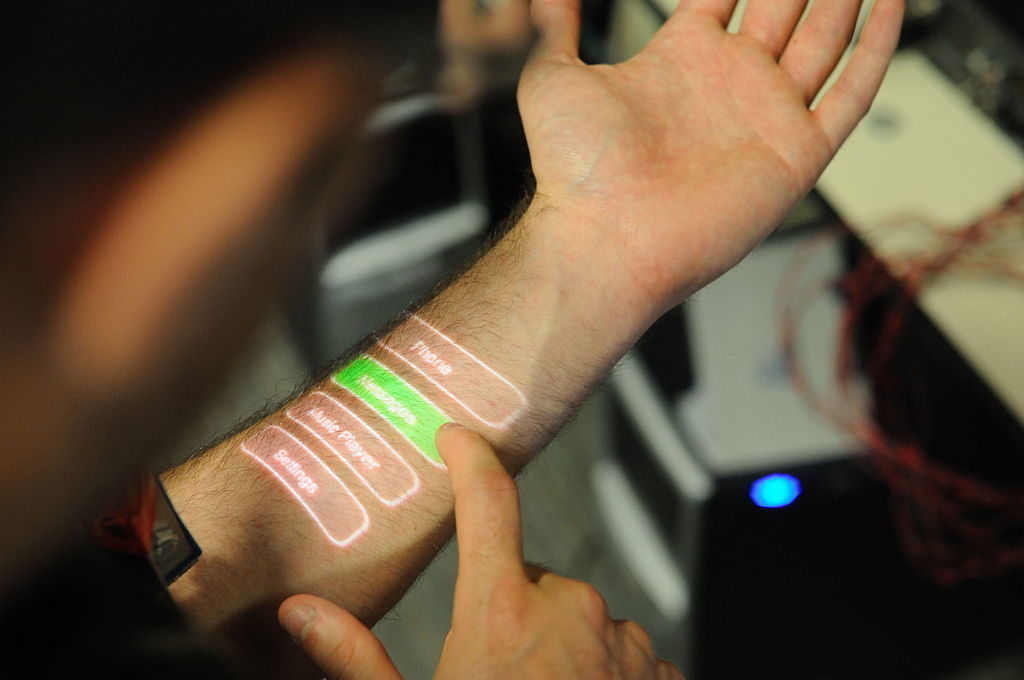Wearable electronics are the new fashion statement. Fitness trackers, smart watches, electronic skins….the possibilities are endless. We don’t lug around our gadgets anymore, we wear them. But every story has its villain. Drop that smart bracelet, and your device won’t be covered by warranty. There’s always fine print at the back of the box that reads ‘Handle gently’ and a fat pamphlet listing out all damages the warranty won’t cover.
That’s because most wearable electronics aren’t designed to tackle accidents and abnormal strain. These devices incorporate semiconducting materials that can transmit information from your body to the device. Most of these materials are complex molecules called polymers that crack under excessive stretching and degrade with long term usage, raising questions about their functionality and reliability. Polymers that are durable usually don’t perform well electronically, and vice versa.
Conjugated polymers, also known as intrinsically conducting polymers, are a popular choice for most manufacturers of wearable electronics. Such polymers are characterised by a unique geometric arrangement of atoms, which makes it easy for the electrons in them to transmit information in the desired direction. Because of this special chemical make-up, conjugated polymers, unlike regular polymers, can behave like semiconductors by conducting electricity, and stretch a bit too. It was a popular notion that polymer blends, prepared by combining two or more conjugated polymers, would be able to provide an excellent mechanical and electrical performance in wearable devices. But that was not the case, as the internal structure of polymers remain relatively unchanged, and such blends caused the semiconductor to perform poorly.
These drawbacks prompted Jie Xu and his 26 colleagues to design polymer semiconducting films using polymer nanoconfinement.
CONPHINING Polymers
No, that wasn’t a typo. CONPHINE stands for conjugated polymer/elastomer phase separation-induced elasticity. It is a fitting acronym that sums up the work of researchers hailing from renowned labs across the USA, China, and South Korea. CONPHINE is a novel, cost-effective method to obtain highly stretchable polymer semiconducting films using a technique known as nanoconfinement, which involves reducing the size of a polymer down to the nanometre scale to modify its kinetic and thermodynamic properties.
“Nanoconfinement” relies on the fact that as the size of materials is reduced down to the nanoscale, some of their properties tend to change, mainly due to an increase in surface area associated with size reduction. Imagine a rectangular block with six faces. If you halve that block, you have two extra faces, resulting in a net increase in surface area compared to the original block. Continue cutting down the block till it is the size of one billionth of a metre (or 10-9 m), and you have reduced the block to the nanometre scale. In a similar fashion, reducing the size of polymers increases the area over which the polymer molecules can interact with other substances.
In polymer nanoconfinement, nano-sized and slender fibres of a conducting polymer are encased within a soft and stretchable material, known as an “elastomer” (like multigrain seeds in bread). Due to its small size, the conducting polymer can bond well with the surrounding elastomer over a large surface area. The resulting blend of polymers can thus transport electrical charge efficiently, as well as stretch comfortably with the wearer’s body.
The CONPHINE film is like a polymer peanut butter sandwich. An elastomer material is sandwiched between two “slices of bread” made of the conducting polymer nanoconfined within the elastomer.
One such CONPHINE film was made with a semiconducting polymer known as DPPT-TT and a stretchable elastomer known as SEBS. These are acronyms for their much longer chemical names. Tests performed on this film showed that it carried electrical charge equally as well as the pure semiconducting polymer, indicating that adding the elastomer did not have a negative effect on performance.
When both films were subjected to extensive stretching, the CONPHINE film put up an even better mechanical and electrical performance than DPPT-TT. These results were practically unchanged when tests were conducted on the film after one year, making the CONPHINE film suitable for long term usage in practical applications.
CONPHINE On Your Skin
Jie Xu and his team fabricated thin film transistors (TFTs) using the CONPHINE film. They were found to be extremely robust, showing excellent charge mobility even when they were subjected to repeated cycles of twisting, stretching, and poking. This is an extremely significant result, because it is important that wearable electronic devices demonstrate excellent performance and high tolerance to rough handling.
These thin film transistors also had a skin-like nature, and were transparent enough to be used as a material for electronic skins in sensory applications. The researchers conducted an interesting little experiment where the CONPHINE film transistor wrapped around a finger drives an LED bulb even when the finger moves.

Left: An illustration of the constituents of a CONPHINE film (Polymer sandwich, anyone?) Right: Experiment conducted by the researchers where a thin film transistor drives an LED attached to a finger. Figure Credit: Namrata Dave
The Way Forward
The CONPHINE method has proven to be successful even with other high performance semiconducting polymers. Polymer nanoconfinement has the potential to revolutionize the biomedical healthcare, general wellness, and entertainment sectors, and paves the way for affordable and comfortable smart devices. CONPHINE, folks, is here to stay.


